Did YOU have a PDA?
For 20 years the Personal Digital Assistant was THE management gizmo, until the smartphone came along and ate its lunch!
So let's look back at the early days of the pocket office revolution. Bring your stylus...
For 20 years the Personal Digital Assistant was THE management gizmo, until the smartphone came along and ate its lunch!
So let's look back at the early days of the pocket office revolution. Bring your stylus...
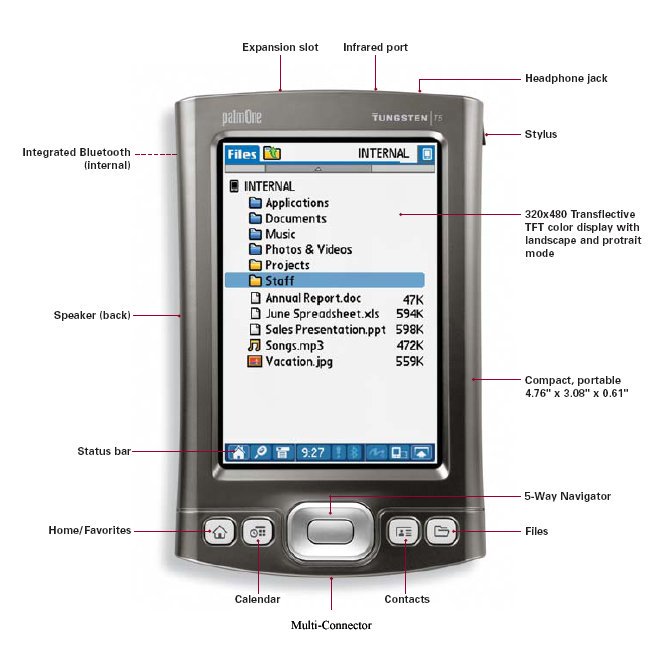
Pocket tech took a big step forward in the 1970s via the humble calculator, and one model in particular: the 1974 Hewlett Packard HP-65. It was the world's first programmable handheld calculator thanks to a magnetic card reader that let you load and save programmes. 
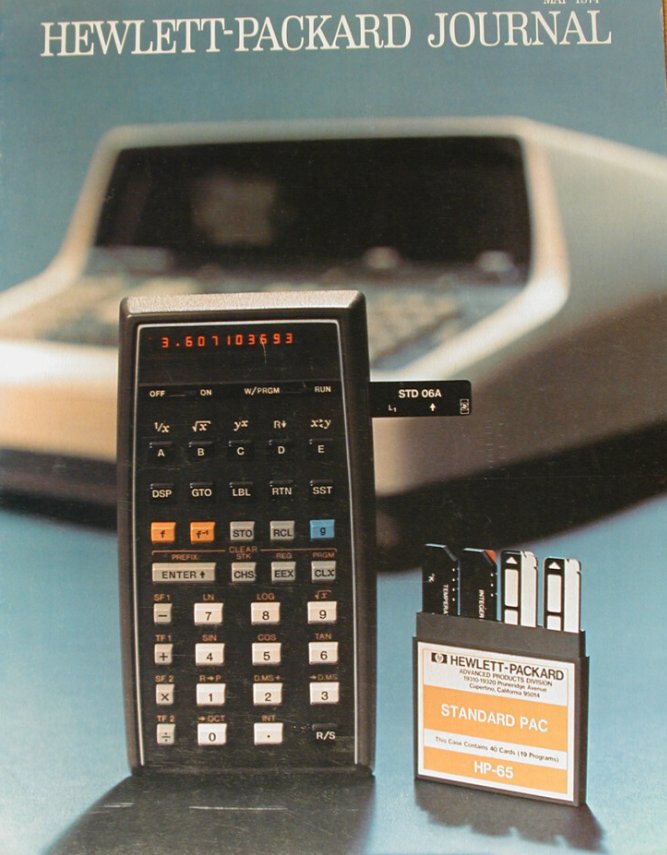
Six years later the revolution took another step forward with the Sharp PC-1211. This was a 'pocket computer' with a QUERTY keyboard and 24 character LCD that supported BASIC programming. Tandy rebadged the 1211 as the TRS-80 PC1 for the American market. 
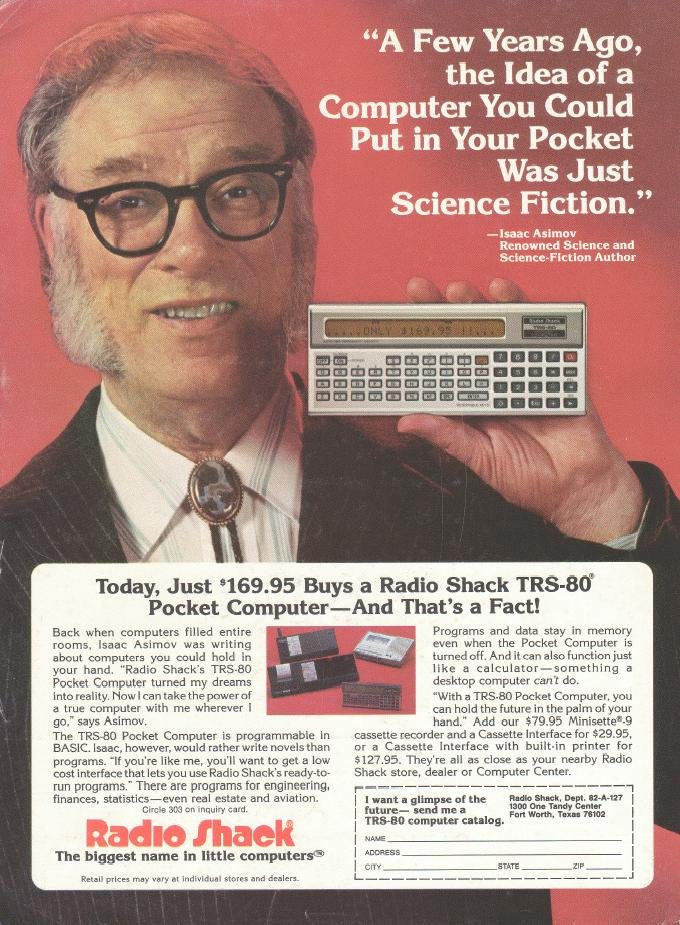
Pocket computers were really long programmable calculators, but in 1982 Hewlett Packard introduced a novel feature on its HP-75 model: an appointments scheduler.
And with a built-in alarm as well as a text editor the seeds of the Personal Digital Assistant had been planted...
And with a built-in alarm as well as a text editor the seeds of the Personal Digital Assistant had been planted...
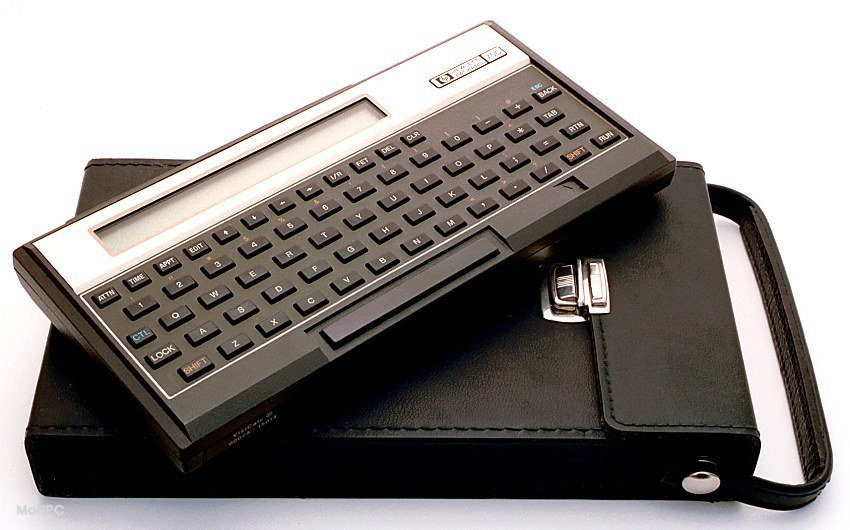
Then in 1984 Psion launched the Organiser: a pocket computer with a scheduler and a database in a rugged design. For the first time you could store contact details, organise your diary, do calculations and run simple programmes on the go. Battery life was measured in months. 

The Psion Organiser 2, launched in 1986, included an operating system, a programming language and a RS232 port for connecting to other systems. It was widely used by businesses for stock control, quality inspection and currency calculations.
Handheld computing was taking off...
Handheld computing was taking off...
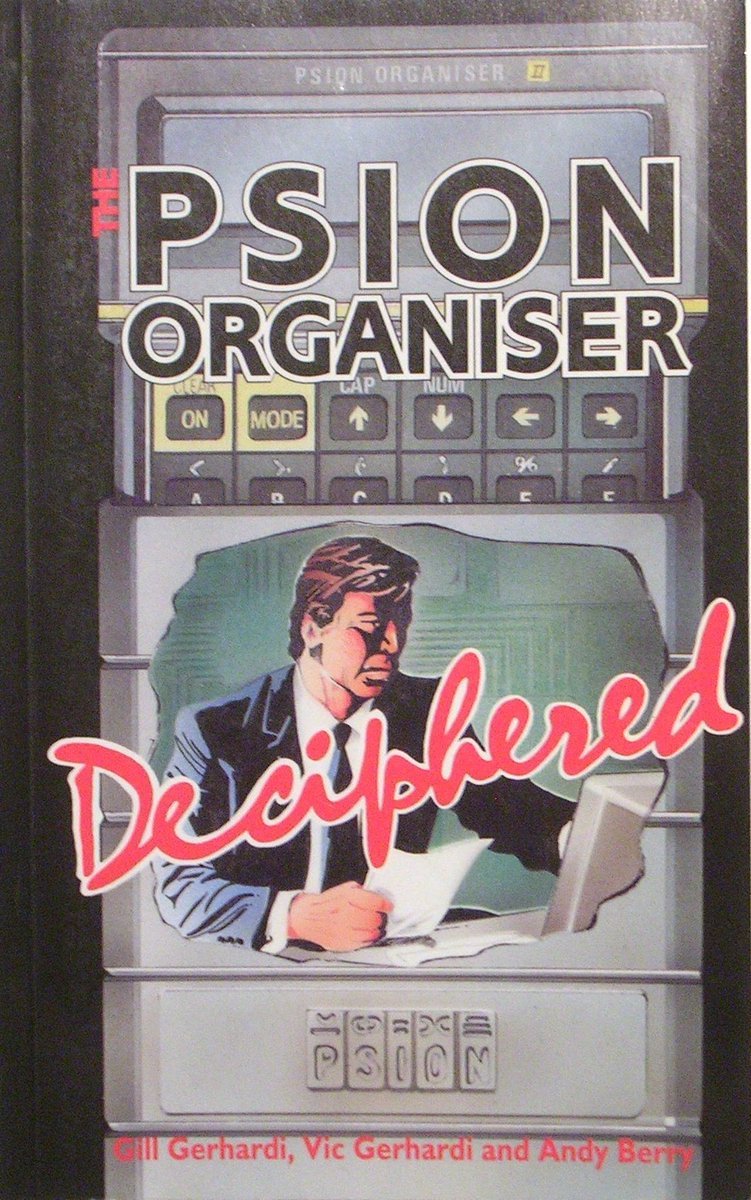
By 1989 the handheld market was starting to split in two. One branch led to the palmtops: IBM PC compatible sub-laptops such as the Poquet PC and the Atari Portfolio. Simple, light and rugged the Portfolio was the PC John Connor used to hack ATMs with in Terminator 2.
The other branch led to personal productivity devices such as the Sharp Wizard: a pocket-sized organiser with inbuilt scheduler, notepad and phone book. Expansion packs included a dictionary, translator and Tetris. However its non-QUERTY keyboard took some getting used to. 

Meanwhile Apple, having fired Steve Jobs in 1985, were working on a device which didn't need a keyboard. In 1983 Steve Jobs had talked of making an "incredibly great computer in a book that you can carry around with you." New CEO John Sculley was going to try and do just that.
It was a tough challenge. Apple were making a brand new device with a new OS on a new chip running new software with a new user interface in a new lightweight case made by new designers - just as everyone else was moving into laptops.
However they persevered...
However they persevered...
...and in 1993 they launched it: the Newton. It had three new ARM processors and a battery that ran for weeks in a notepad-shaped device that weighed less than half a kilo. You could tap the screen with a stylus or write straight on it, as it would recognise your handwriting. 

But the Psion Series 3 had already launched in 1991 to wide acclaim. It had a scheduler, database, word processor and spreadsheet applications in a sleek clamshell design with a traditional keyboard. It took flash memory cards and ran on AA batteries. Would anyone want a Newton? 

The Newton was incredibly clever, but at launch its handwriting recognition sucked. Doonesbury mocked it as a toy that couldn't read properly. Although it improved later on it wasn't enough; Newton was the first thing Steve Jobs killed off when he rejoined Apple in 1997. 

However the Newton did coin the phrase 'Personal Digital Assistant' and it did show that handwriting recognition could be part of the user interface. One company would take this idea and make it work - though it did involve learning a new way to write. 

Palm was founded in 1992 by Jeff Hawkins, who had already developed the PalmPrint writing recognition system for the GrIDPad pen-based computer in 1989. Working with Tandy and Casio his new company launched the Zoomer in 1993 as a rival to the Newton. It suffered the same fate. 
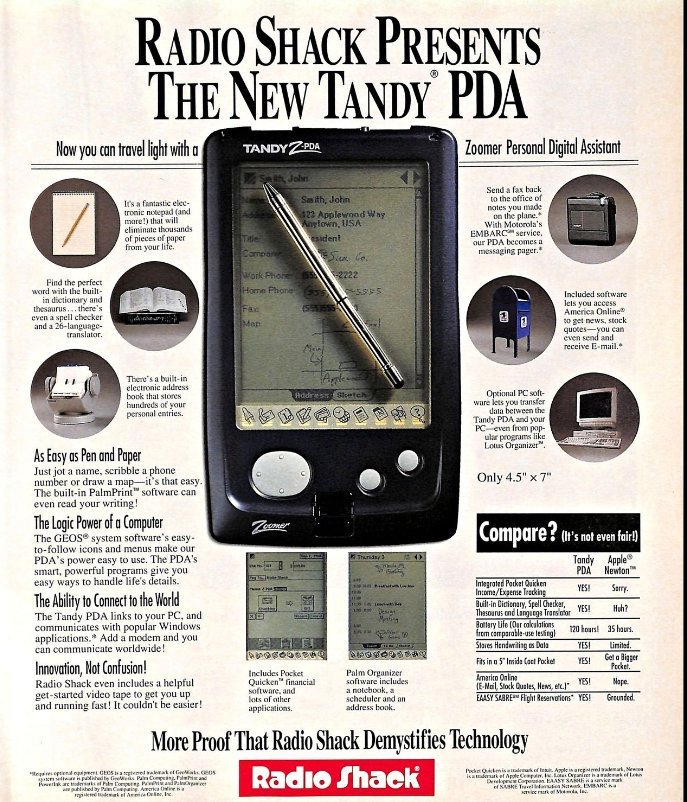
But Hawkins was convinced that a palm-sized pen-driven system could work. Research showed that Zoomer owners saw it as a PC accessory rather than a computer in its own right. The key to success was making a simple device that would sync with a PC effortlessly.
Hawkins had another innovation. Graffiti was a new way of writing on a PDA, using a single pen stroke for each letter. Once users learnt the pen strokes (a 15 minute job) character recognition accuracy improved. Graffiti was released for Newton in 1994 and won rave reviews. 

Palm was bought by US Robotics in 1995 and with new capital Hawkins released his PDA - the PalmPilot - in 1996. Easy to use, intuitive and light the PalmPilot could sync easily with your PC and had a range of software available. It was an instant hit. 

Later PalmPilots had backlit screens, wireless connectivity and colour displays. The brand seemed unstoppable, even after Hawkins left Palm to found rival company Handspring.
But the PDA's zenith was approaching...
But the PDA's zenith was approaching...

In 1999 RIM launched the BlackBerry 850: capable of handling email and syncing with your office email account. With a scheduler, task list and basic browser - along with a thumb-board and scroll wheel - the 850 put your business correspondence in your pocket. 

By 2002 the BlackBerry had surpassed the PDA as the go-to tool for business on the move with the launch of the 6210 - the 'Crackberry'. It was a phone, email, address book and scheduler that could sync with your work account. The PalmPilot was yesterday's news. 
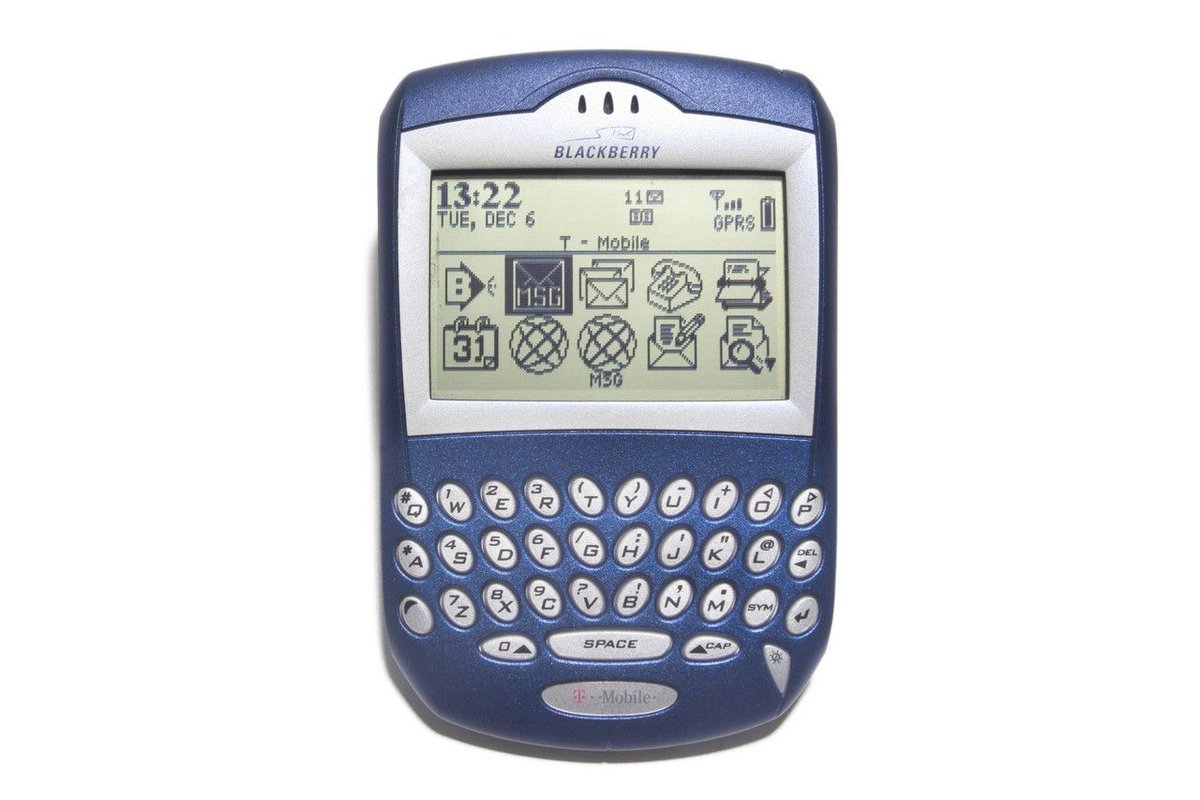
And then the iPhone arrived and the BlackBerry got squashed. So it goes.
But let's salute the humble PDA - it did a lot of the heavy lifting that made today's tablets and smartphones actually work for us. Now our only problem is putting them down.
More stories another time...
But let's salute the humble PDA - it did a lot of the heavy lifting that made today's tablets and smartphones actually work for us. Now our only problem is putting them down.
More stories another time...
• • •
Missing some Tweet in this thread? You can try to
force a refresh























